
On Wednesday 3rd December Keri Wallace completed a non-stop West Highland Way, solo and unsupported, in a time of 28 hours 19 minutes. It's the first time the route has been run by a woman, in this style, in winter - and only the second time, so far as we call tell, that anyone has done it solo and unsupported at this time of year.
Scotland's original long distance trail, the classic 154km (96 mile) route from Milngavie on the outskirts of Glasgow to Fort William is walked by thousands every year - but not so many run it in a single push, and even fewer in winter. Of those that do, most attempts have had logistical and moral support, with the only other unsupported winter WHW being by Neil MacNicol in 2016. Running from north to south, MacNicol completed the route in 20hrs 33mins.
Spending 17 hours focused within the beam of a headtorch is brain numbing! Darkness allows doubts to creep in...
As a runner who spends most of her time in the mountains, both alone and as a running guide for her business Girls on Hills, Keri rarely finds herself on longer, lower-level trails such as the WHW. But after completing the Ultra Tour de Monte Rosa in 2023, she began to realise she was capable of doing longer-distance challenges, and started to consider national trails closer to home.
"I first had the idea of doing the WHW in particular when I was writing my guidebook Running Challenges, which includes a leg of the trail" says Keri.
"I noticed that several of the challenges in my book didn't have female First-Known-Times, let alone Fastest Known Times. Most notably, there are rarely solo unsupported completions by women, even on major, popular trails and rounds. This sparked my interest, and the WHW seemed a logical choice, being my nearest Great Trail and a much-loved Scottish classic."
Being largely a solo runner, and with a mountaineering background, Keri says she loves the additional rigours of winter, and the self-sufficiency that it demands.
"The fact that a solo unsupported winter WHW hadn't been done by a woman was a draw for me, as it felt really hard but also possible. I'm always inspired by the solo unsupported running challenges of athletes like Finlay Wild, and so I thought this new challenge would be a good fit for me."
While the West Highland Way has been done in winter in under 20 hours (Andy Campbell, 19h54m, January 2024), an unsupported solo journey presents a different level of challenge and commitment, requiring the runner to carry their own food, water and extras, and to make all the key calls on the hoof.
"Being unsupported makes a big difference to the time it takes to do a journey like this" Keri says.
"Whenever you have a setback, you have to sort it out yourself. For example, I am used to drinking from mountain streams when I'm running in my home area of Glencoe, but in the more suburban, southern half of the WHW, I wasn't confident about the water quality as there was a lot of livestock around. I was therefore often quite low on water, and sometimes struggled to find public toilets to refill my softflask. I hadn't even thought about the drinking water situation when I set out, so that was a bit of a surprise."
Despite the fact that it saved the bigger climbs for later in the journey, Keri chose to run south-to-north, the customary direction for most West Highland Way-farers.
"I thought it would be nice to complete it the traditional way and finish at the official end, the Man With Sore Feet sculpture on Fort William high street" she says.
Being based in Lochaber, she already knew the northern end of the trail well, but was much less familiar with the southern half.
"I recced the first 5km out of Milgnavie, as I know that getting started can sometimes be the hardest bit - and navigating in suburbia is much harder than in the mountains" she explains.
"Other than that, it was all a lovely surprise. I didn't have a schedule or even a target time really, I just wanted it to feel like an adventure – which it definitely did. I had been warned about the northern stretch of Loch Lomondside but it still surprised me how slow going and long it was: Very technical, with lots of obstacles that make running pretty much impossible, especially when wet and covered with leaves!"
As much as I have probably made it sound like a massive sufferfest, I LOVE all this stuff!
She had originally intended to do it at midwinter, but with two small children she felt that the immediate runup to Christmas might be too hectic. In the event it was an earlier weather window that decided her schedule:
"On Tuesday December 2nd the weather was looking dry and very cold. I decided to try and get things in motion and have a (pretty unprepared) crack at it." she says.
"At the moment I'm training for the Arc of Attrition in January, so in some ways the training element was already there. It's a similar length to my upcoming race but different in terms of terrain. The main question for me was whether it was a bad idea to try something so long, this close to an important race - and the jury is still out on that! I have to admit that most of my planning was to do with childcare arrangements, as this is THE showstopper for me. Ultimately, my run plan was woefully inadequate, but I came to believe that all I really needed was the opportunity to toe the start line."
Conditions and weather vary day to day, but darkness is a constant factor in winter. On the day she chose there was 17 hours of darkness, leaving only seven hours of light to play with. This made it necessary to consider carefully where the light would be most helpful. Timings were chosen to make the best use of the little available daylight at the start and finish of the trail, with much of the intervening route being run by torchlight. However even the best-laid plans do not always survive contact with parenthood.
"I had planned to start around sunrise from Milngavie" Keri recalls, "but on the night before the run, my youngest daughter decided that she didn't want me to be gone in the morning when she woke up (my friend and colleague Nancy was going to come and stay, and take her to school). She seemed so sad that I just couldn't bring myself to do it. So Nancy and I rapidly rehashed the plan - I got my daughter up in the morning, then did 'Elf on the Shelf and chocolate calendar' before setting off around 7:30am in the car from Glencoe. I started my run at 09:48am from Milngavie - frankly a ridiculous time to start, but there it is."
In fact, more than the weather or the physical aspect of the journey, her biggest pre-run concern was the dark, she confides, and particularly in more inhabited areas towards the south of the trail.
"I didn't want to have some kind of meltdown in the middle of the night. The rationale for starting in the light was that I'm quite afraid of the dark, particularly in more urban/suburban settings such as Milngavie where I am more likely to meet other people. I'm happier out in the dark in more rural and remote areas where I'm likely to be alone" Keri tells us.
This is a subject she will be exploring at more depth in an upcoming article.
"I discovered that I am mostly scared of woodlands! Seeing the lights of the road on the other side of Loch Lomond was weirdly a comfort as the sun went down. But once I ran into the more wooded sections, it started to feel like a scene in the Blair Witch Project; blinded by my headtorch beam bouncing off my frozen breath and always resisting the temptation to look over my shoulder.
"Whenever there was a derelict building, ruin or underpass, I felt really on edge. I even unexpectedly passed a remote graveyard near St Fillan's Priory - which was very much NOT appreciated. I had to give myself a bit of a talking to there! Once I passed Tyndrum though, I felt 100% comfortable on the more open forestry roads and mountain trail. And in reality I think you actually get too tired to worry as much as you thought you might."
Of course, psychology aside, running in the dark does also make navigation much harder, even on a trail as well-trodden and well-established as the West Highland Way.
"Because I'd never run the whole Way before, I had to look carefully whenever signage was lacking" she says.
"In daylight it's easy to see where the trail goes but in darkness I took a few wrong turns and had to check my watch/phone to correct myself. There are fewer signs in the northern part of the route than the south, where the waymarking is excellent."
"Darkness also means it's colder, so more hours of colder running. Spending 17 hours focused within the beam of a headtorch is a bit brain numbing! Darkness definitely affects my motivation and allows doubts to creep in."
But night running has its compensations too:
"A gorgeous sunset began while I was on Conic Hill and finally set as I was around Rowardennan. I was therefore in darkness for the latter half of Loch Lomond and then all the way to Glen Coe, where the sun finally rose as I climbed the Devil's Staircase. It was a very cold and clear night, and I was treated to a brief glimpse of the aurora around 10:30pm."
Had it been snowy underfoot, she thinks the journey would have taken longer, while the hardest conditions would be wet and windy, when managing body temperature can be a struggle. Nonetheless, unpredictable winter ground conditions can always add time-sapping factors, says Keri, such as in her case frozen puddles and icy trails.
"Things were cold and crisp throughout the night, which meant good running conditions on the gravelly tracks and forest roads but quite dicey on more wooded/singletrack stretches. There were plenty of ice patches around, which were sometimes quite hard to see.
"All the frosty boardwalk sections and bridges were pretty treacherous overnight" she says, "so I had to resort to a comedy shuffle to make progress. There wasn't enough ice or snow to justify wearing microspikes, so I just had to pick my line on the trail carefully. In the southern half the trail was really waterlogged. In the day this meant getting fully wet feet all the time - perhaps the result of a huge thaw the preceding day, in which the snowfall from Storm Bert melted away. Bert had also brought down a number of trees across the trail."
By Inverarnan it was dark, which meant a lot of ice to negotiate. She also ran into unexpected problems with her feet, when she got small stones in her shoes, and found that her laces had turned into muddy blocks of ice:
"I stopped three times and tried to undo them but couldn't make any headway. Eventually (once I had developed blisters), I decided to stand in a stream until they thawed, which wasn't a very appealing prospect in the conditions. Thankfully I was wearing waterproof socks, which meant that it wasn't as bad as it could've been for my circulation.
"I took time out to pop and dress blisters before running again. I remember thinking it would have been nice to eat or drink something hot during the run."
According to the forecast, the temperature dropped to around minus 3 degrees overnight - more pleasant than soggy above-freezing conditions in some ways, but dry cold is also not without challenges.
"Subzero temperatures can really irritate your throat and lungs when you're running, so I was careful to cover my mouth with a buff and try to reduce coughing" Keri says.
"The cold also affected the powerbank that I was carrying, making its charge drain more quickly than expected. The knock-on affect of this was that I worried a lot about my phone battery. I wasn't wearing a tracker, so kept my phone on airplane/low-battery mode to conserve comms. I sent updates periodically to my colleague Nancy and also my husband (who was working away in Canada at the time). My watch battery also drained much more quickly than usual. My Coros Apex Pro usually copes admirably on winter challenges (e.g. Winter Tranter's Round) but this time it shut down at 126km. This was frustrating as I'd wanted to track my full run, but after that I just had to use time-stamped photos to capture the stage from Kinlochleven to the finish."
Because she was attempting to do a first solo unsupported run, she didn't feel the added pressure of someone else's time to beat, and set out to enjoy the experience as much as she could. Her pace was steady rather than speedy:
"Strava says my average pace was 9:46 mins/km, which is hilariously slow but in reality this reflects the fact that I was switching between walking and running all the time" she says.
"Earlier in the journey I really enjoyed the section from Conic Hill (fabulous views) along the edge of the Loch Lomond shore. It was really quiet on the trail and I hardly saw anyone, just lots of empty beaches with a beautiful sunset - I couldn't stop taking photos. I also saw loads of wildlife, which was a huge bonus: a barn owl, wild geese, rabbits, loads of deer and frosty Highland Coos."
Keri's winter WHW kit list
I wore Trailfly Ultra G 280 from INOV8 and Dexshell Running Lite 2 socks. On my legs I wore INOV8 winter tights and up top, an INOV8 Mid Long Sleeve Zip Top and Venturelite Mid Hoodie – this has a great hood and long sleeves with thumb-loops for winter running. I wore my trusty Montane Prism mitts throughout.
Because I was on the move all the time, I didn't change my layers much. I did wear an insulated jacket over the top towards the end and at times overnight, whenever I felt coldest. I carried my kit in a Venturelite 25 backpack but in hindsight would have preferred a smaller volume bag.
I carried two 2024 Peztl Swift RL headtorches and a spare battery, plus an e-lite. I carried a small powerbank and cable, a survival bag, small first aid kit, small stick of Bodyglide, waterproof Trail Pants from INOV8, spare gloves and hat, buff. And LOTS of food. This was kind of funny because I mostly took random stuff from home:
- 6 x tiger rolls with ham
- Hawaiian pizza x 1
- 2 sausage rolls
- Snickers bar
- Packet of Mentos mints
- 4 x VOOM Pocket Rocket bars (two were with caffeine)
- 4 packets of Hula Hoops (salt and vinegar obviously)
- 1 x Recovery Fudge bar from VOOM
"I did start to think I had maybe bitten off more than I could chew when the northern section of the Loch Lomond shore took so long, and I was a bit disheartened. As as soon as I reached Inverarnan, my pace picked up. It felt great to be moving properly again and the section from here to Tyndrum felt comparatively short. Then from Kinlochleven my ankle had become sore, so I did more walking than running towards the end."
"By the time I got to Lundavra, the weather had turned and it had started to snow. It was a bit of a demoralising finish in some ways, running into strong, sleety winds. But by that point there was no choice but to finish!"
"As much as I have probably made it sound like a massive 'sufferfest', I LOVE all this stuff! It was super exciting and liberating to know that the kids were safely tucked up in bed and I was out having this epic adventure on an absolutely stunning night – I felt very lucky."
Want to know more about the West Highland Way?
Check out UKHillwalking's stage-by-stage route description:
- REVIEW: Rab Nitron 25L Pack 22 Aug
- INTERVIEW: James Gibson on the Martin Moran Round Record 18 Aug
- REVIEW: Montane Terra and Jetstream Shorts 5 Aug
- REVIEW: Rab Downpour Trail Lite and Phantom - ultralight shells for runners and backpackers 29 Jul
- REVIEW: Upland by Ian Crofton 30 Jun
- REVIEW: Rab Trail Tee 23 Jun
- REVIEW: Lorpen T3 Trail Running Eco Socks 10 Jun
- REVIEW: Sea to Summit Airlite Towel 30 May
- REVIEW: Primus Ulti Stove System - Finally, a rival to the Reactor? 12 May
- REVIEW: Black Diamond Pursuit Carbon Z Poles 29 Apr








































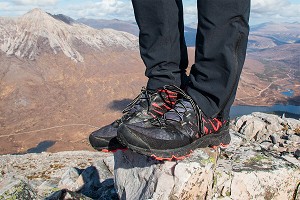
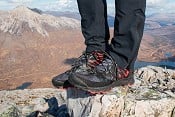
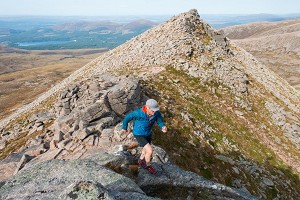
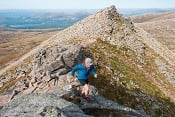
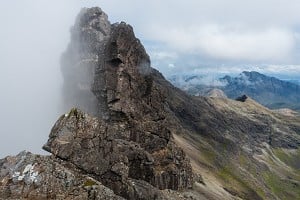
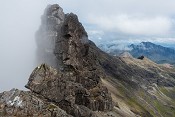
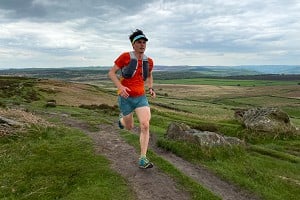
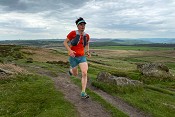
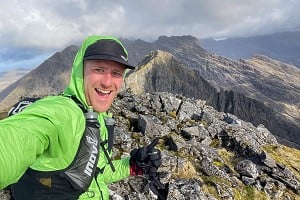
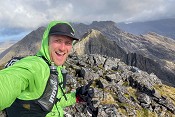
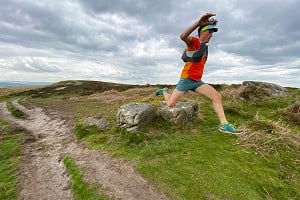
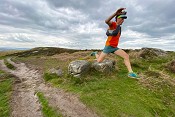
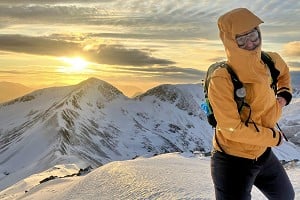
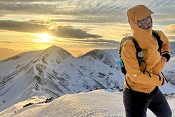








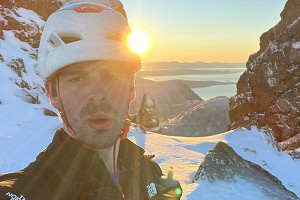
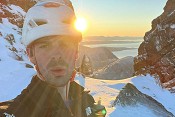

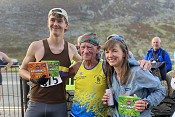

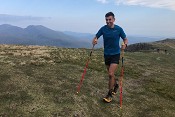
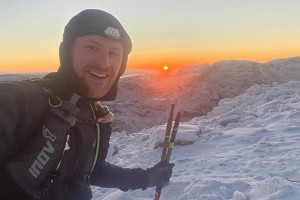
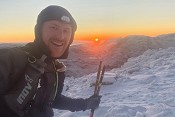
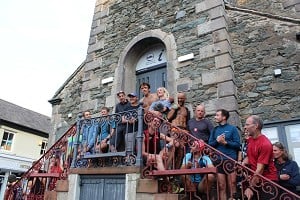
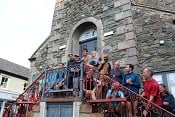
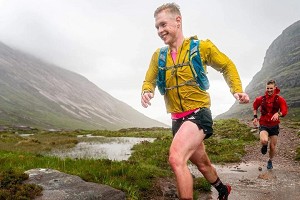
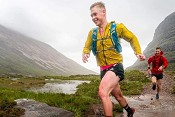
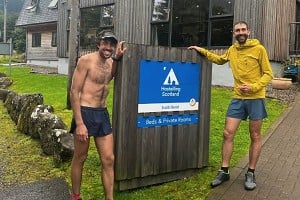
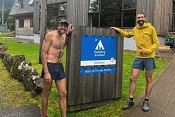
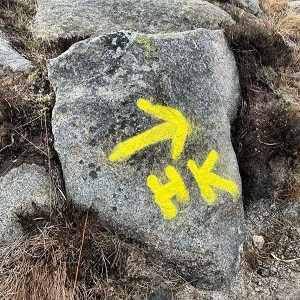
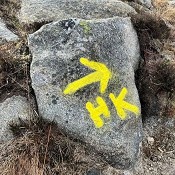

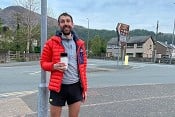
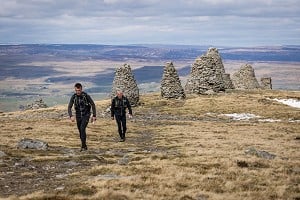
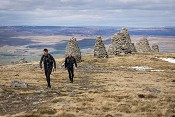
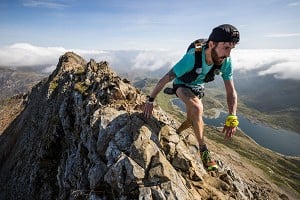
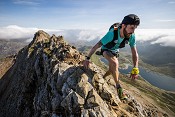
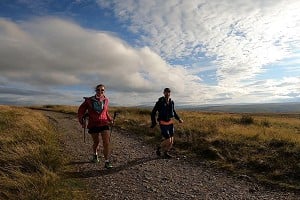
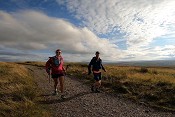
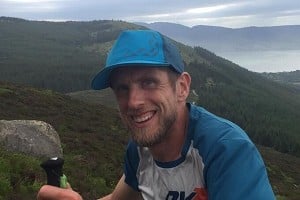
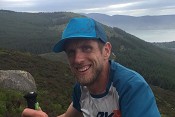
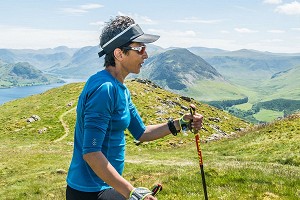
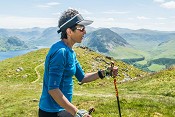
Comments
Love that. I really think the unsupported ventures are so much more impressive and pure than the supported ones.
What a great adventure, and love the late start due to daughter. Very well done. It’s 37 years since I walked the WHW and that was over 7 days in Summer 😄
I'm pretty surprised this hasn't been done before, but it does seem a good challenge. With a lot of the trail at lower levels and unlikely to be covered in snow, presumably the main difficulties outwith summer are lack of daylight and the need to carry more kit in case of emergency?
Cracking effort and a great write up.
I'm curious to understand the dislikes? Are they from ramblers who only walk in organised groups? Perhaps they frown on unsupported solo efforts?
Not sure. It could reflect the difference between running it as an ultra and what most think of regarding the trail (a straightforward walk). At least in terms of the latter, "Solo and unsupported on the West Highland Way" does have an air of comedy about it.